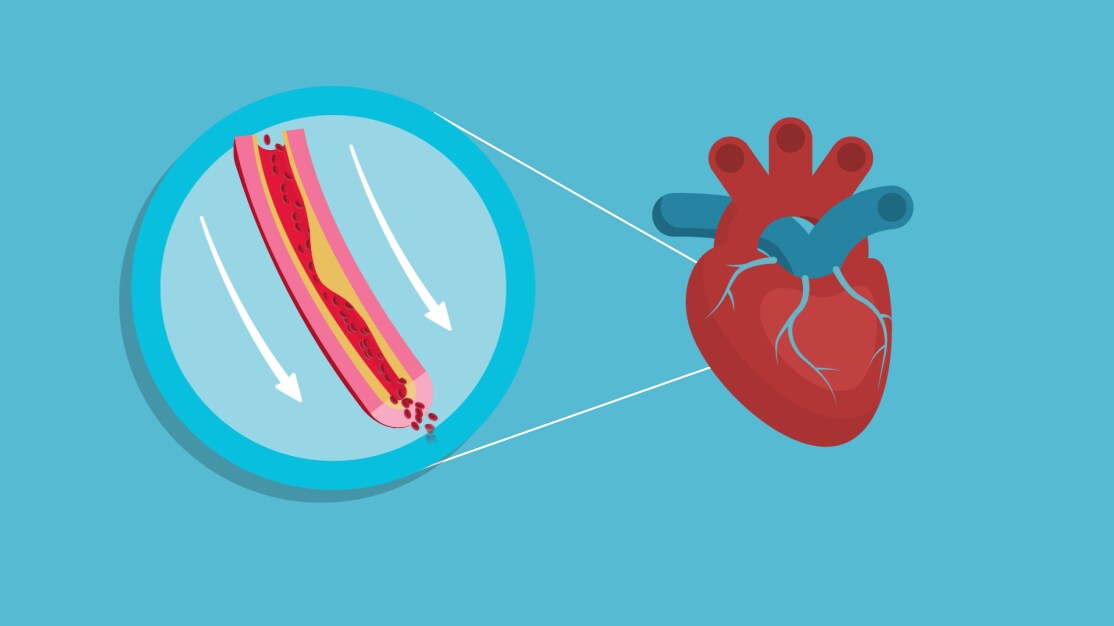What is angina?
Resident Pharmacist
University of Minnesota and Walgreens

Angina is chest pain that is the result of the heart being deprived of oxygen-rich blood.
Angina is not a disease but rather a symptom of an underlying heart problem like coronary heart disease. Angina may be a warning sign before a heart attack. If you have chest pain that doesn't go away, call 9-1-1.
What are the causes of angina?1,2
Angina is caused by the heart not getting as much oxygen as it needs. This may be due to ischemia (blockage) or atherosclerosis (fatty buildups), or a blood clot inside the vessels surround the heart.
What are the symptoms of angina?1,2
Symptoms of angina may or may not include the following:
- Chest pain
- Shortness of breath
- Belching, nausea, indigestion
- Sweating, dizziness
- Lightheadedness
- Clamminess
- Fatigue
Is angina painful?2,3
There are many different types of angina pain. Some people describe angina pain as a squeezing feeling or like something heavy has been placed on the chest. Angina pain can come and go and most commonly appears with exercise. Some patients also feel pain in the neck, jaw, shoulders or back. Angina in women might cause different types of pain, like stabbing pain.
What are the types of angina?2,3
Stable angina — Stable angina, or angina pectoris, is chest pain/discomfort that occurs when the heart must work harder than normal, usually during physical activity, and lasting less than 5 minutes. Stable angina is caused by coronary heart disease and can resolved by resting or with medicine. It occurs when the heart muscle doesn’t get enough blood. This usually happens because one or more of the heart's arteries is narrow or blocked, also called ischemia.
Unstable angina — Unstable angina, also referred to as acute coronary syndrome, usually occurs when a person is at rest. It usually last longer than 5 minutes and is described as unexpected chest pain while resting. This type of angina typically is not resolved with rest or medicine. The most common cause is reduce blood flow to the heart muscle because the coronary arteries are narrowed by fatty buildups (atherosclerosis) which can rupture causing injury to the coronary blood vessel. This can result in blood clotting which blocks the flow of blood to the heart muscle.
Varian angina — Variant angina, or prinzmetal angina, occurs almost always when a person is at rest and can be very painful. Varian angina is caused by spasm in the arteries surround the heart. This type of angina is pretty rare, accounting for 2 out of 100 cases of angina.
How is angina diagnosed?2
Angina may be diagnosed by the following methods:
- Electrocardiogram (ECG or EKG) — This test records patterns in your heart beat to determine if the blood flowing through your heart has slowed down.
- Stress test — During this test, you will be on a treadmill or stationary bike while your ECK is done because it might be easier to diagnose angina when your heart is working harder.
- Echocardiogram — This test uses sound waves to take pictures of the heart to find any damage in your heart muscles.
- Chest X-ray, cardiac MRI, CT scan — They may be used to take pictures of your heart to find any damage to your heart muscle.
- Blood tests — If your heart has been damaged, certain enzymes will appear in your blood and is another method to identify If you have had a heart attack.
What are the treatment options for angina?2,4,5
Stable angina — This type of chest pain is usually relieved with nitroglycerin. Other medications, including beta-blockers and calcium channel blockers, may be prescribed. Procedures such as placing a stent or performing a bypass may be done if necessary.
Unstable angina — First your doctor will want to find the blocked part of your artery by performing a cardiac catheterization. This is where they guide a small catheter through your artery to find exactly where the blocked artery is. Depending on what they find, there are two options. The first is to use the catheter to bring a small inflatable balloon to the blocked portion. Once the balloon is inflated, it squeezes open fatty plaque deposits to the sides of the artery and a stent is placed to keep the artery propped open. The second option called a bypass, is to use a blood vessel to route blood around the blocked part of the artery, like a detour.
Variant angina — This type of angina is usually treated with medications like calcium channel blockers and/or nitrates like nitroglycerin.
For all types of angina, it is important to reduce your risk factors for atherosclerosis, ischemia, and heart disease. Some ways to do this are to avoid or quit smoking, exercise 30-60 minutes per day, keep other conditions such as diabetes, high blood pressure, or high cholesterol under good control, eat a healthy diet, and manage your stress.
Published on April 30, 2020
References:
1. American Heart Association. Angina (Chest Pain). https://www.heart.org/en/health-topics/heart-attack/angina-chest-pain. Published 2020. Accessed February 11, 2020.
2. National Heart, Lung and Blood Institute. Angina. https://www.nhlbi.nih.gov/health-topics/angina. Published n.d. Accessed February 11.2020.
3. Mahler SA. Angina pectoris: Chest pain caused by fixed epicardial coronary artery obstruction. UpToDate. https://www.uptodate.com/contents/angina-pectoris-chest-pain-caused-by-coronary-artery-obstruction#!. Accessed February 11, 2020.
4. DynaMed [Internet]. Ipswich (MA): EBSCO Information Services. 1995 - . Record No. T116779, Acute Coronary Syndromes; [updated 2018 Nov 30, cited February 11, 2020]. Available from https://www.dynamed.com/topics/dmp~AN~T116779. Registration and login required.
5. DynaMed [Internet]. Ipswich (MA): EBSCO Information Services. 1995 - . Record No. T114265, Management of Stable Angina; [updated 2018 Nov 30, cited February 11, 2020]. Available from https://www.dynamed.com/topics/dmp~AN~T114265. Registration and login required.